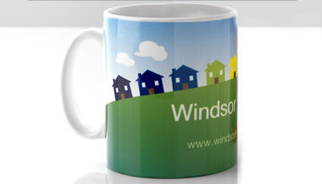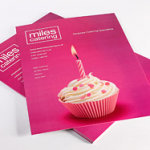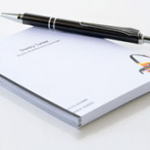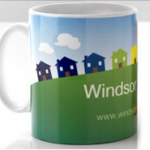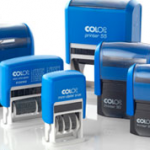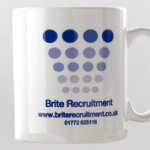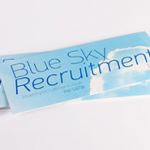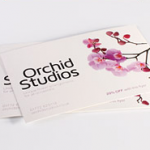There’s no doubt that starting a business is a lot harder today than it has been in the past. With a more competitive market and even more discerning consumers, it’s no surprise that a lot of businesses are struggling to draw in new customers, keep loyal ones and drive business growth.
But while there’s no magic recipe to success in business, there are certain smart advertising strategies that will help make your business more attractive to potential customers.
As you probably know, one of the keys to succeeding in the digital age is to take advantage of social media and all it has to offer. But don’t make the mistake of thinking that you can abandon all offline advertising strategies, as they can be invaluable as well.
This guide will talk you through eight small business advertising and marketing tips that will attract new potential customers, and encourage them to choose your company over a competitor.
1. Start with a Firm Game Plan
Like everything else in business, you need to start your marketing efforts with a good game plan. Who do you want to target for your campaigns? What do you want to achieve?
You’ll need to know and understand the demographics of your target market, as well as being extremely familiar with any competition you may have in that area. These factors can greatly influence the kinds of marketing and advertising that will work best for your company.
For example, if your target market is young people, you should focus your efforts on social media campaigns and online ad spaces. But if your business appeals to the older generations, this would be a waste of time and money – you’d be far better off going a more offline route.
Next, you’ll need to have a firm advertising and marketing fund. By being specific about your objectives, it will be easier for you to choose strategies that work for your business and within your budget.
2. Don’t be Afraid to Go Old School
Don’t make the mistake of focusing your entire marketing budget on online advertising. “Old school” techniques still reap a lot of benefits to smaller businesses, especially since most consumers are already overwhelmed with the amount of digital marketing that’s sent their way. It’s much easier to scroll past a Facebook ad than to ignore a flyer that’s put through your door.
As a small business, you may not have the budget to put into bigger advertising strategies yet, and that’s okay. Offline techniques can still go a long way – such as:
1) Advertising in newspapers and magazines
2) Word-of-mouth marketing
3) Handing out printed marketing materials, such as flyers and postcards (particularly if they contain discount codes and other special offers, designed to entice people in)
4) Letterbox marketing
5) Giving away freebies, e.g. personalised promotional products
Products printed with your company’s logo and branding, such as personalised mugs, pens, t-shirts and bags are particularly effective.
Market research has demonstrated that people are more likely to think positively about, and support, brands whose merchandise they own. They also have the potential to spread brand awareness far and wide, which is absolutely vital for new businesses looking to get their name out there.
3. Combine Both Online and Offline Techniques
Of course, offline marketing techniques – as useful as they are – can only take you so far in the digital era. No matter what kind of company you are, if you’re just starting out and you want to gain traction as a new brand, you will need to embrace more modern digital marketing methods.
Even when it comes to businesses targeting a more mature market, don’t forget that the older generations are becoming more and more tech-savvy – and their children and grandchildren are online every day.
If you want to maximise the result of your campaigns, you should combine both online and offline marketing techniques that can work together to help you achieve your goal.
For example, a great offline marketing technique is handing out business cards containing all of your company’s branding. Having a pocket-sized, physical reminder of your company will work wonders for keeping you fresh in your customers’ minds. But to bring your cards into the 21st century, you might include a discount code for online purchases, or a QR code that takes people directly to your web store.
4. Capitalise on the Power of Social Media
No one can deny the power that social media has on consumers these days. With people spending on average of two hours daily on social network platforms like Facebook and Twitter – and this figure being even higher for younger generations – being on the forefront means that you’re getting better exposure that could lead people to check out your business. For example:
1) Take advantage of Facebook’s targeted advertisements. You can pay to promote posts through Facebook, and tell the site who to show your ads to – for example, people living in a certain area, or people of a certain gender or age.
2) If you’re targeting a younger market, having your product sponsored by Instagram influencers can have a very real impact on spreading brand awareness.
3) The same goes for popular YouTubers. YouTube content creators often feature “sponsors” throughout their videos, which can work wonders for drawing in new customers.
Being present on social media doesn’t mean focusing all your efforts on these platforms. You just have to determine which sites work best for your business, and learn all about the types of content and promotional materials that you can put on these platforms in order to encourage new customers to see what you have to offer.
5. Invest in Ad Space
Although you can gain exposure organically through your content and social media profiles, paid advertisements are still essential in helping you gain more exposure and hopefully motivate new customers to see what you have in store for them.
You can go with Google ads or social media ads depending on your budget and your goals for your campaign. Buying ad space on websites is a great all-rounder, as pretty much everyone of every age uses the Internet to browse sites that interest them, even if they aren’t on social media.
Advertising is definitely a trial-and-error activity, so you’ll have to do a bit of experimentation first. Try out several different types of adverts and keep track of how many clicks you get. Once you know what works for your business, make sure to double down on those methods so you can gain the most benefits and enjoy positive results for a longer time.
6. Offer Value to New Customers
Here’s the truth: customers now are a lot smarter than they were 10 years ago. They don’t just look at advertisements to buy a product. They’re always looking for value in these campaigns.
Consumers want to find answers to their problems, solutions to their challenges and recommendations that will help them improve their quality of life in one way or another.
This means that you can’t just advertise for the sake of getting a sale. In fact, your revenue should be the last of your priorities when creating a marketing campaign. You want to build that trust with your customers first by making sure that you offer value to them – value that makes you stand out from your competitors.
One of the best ways to do that is through good content. Once you have a good understanding of the common pain points of your customers, you can create articles that offer solutions to those problems with the help of your products, of course.
Once you establish yourself as an authority in your niche, it will be easier to convince people to buy your products.
7. Bank on Imagery
According to scientific studies, the human brain can process images 60 times faster than words. So, it’s very important to make sure that images are part of your advertising efforts. It’s relatively easy to scroll past a large block of text without reading it, but it’s far harder to scroll past an image without at least glancing at it. That split-second glance will still make an impression in potential customer’s minds.
These days, consumers love to devour visual content like tutorials and how-to videos on YouTube, flat lay and artistic images, and even simple reels on Instagram or Facebook stories.
When you have good images, it’s easier to tell your story to people, stir the right emotions and motivate them to check out your business. Do some research into the effects of colour on the brain, for example, to use certain hues to influence what people will think about your company.
8. Respect your Loyal Customers
While the goal here is to draw new customers to your business, you should not forget the importance of retaining loyal customers.
Make sure that you implement strategies that also focus on existing consumers. For instance, you should take advantage of loyalty cards to encourage patrons to keep coming back to your business time and time again, rather than shopping around for competitors.
Don’t forget that loyal customers play an important role in attracting new customers through testimonials and reviews. These people already understand your brand and what you have to offer, and their opinions are highly valued by other consumers.
If they have a good experience with your brand, they can easily refer you to family and friends. Remember that word-of-mouth is still one of the most effective marketing strategies today, so capitalise on that.
Order Your Marketing Materials Today through 123Print
You can’t master effective marketing overnight. It’s a long process that involves a lot of trial and error, and you’ll need to make a huge investment to make things work.
But once you see the results of your efforts, and customers start pouring in, you’ll know that everything you did was worth your while. So, start by embracing these advertising tips into your system.
If you’re looking for marketing materials such as flyers, business cards and loyalty cards, 123Print is the place to go. With years of experience in the professional printing industry, we’re proud to produce some of the most affordable and highest-quality advertising materials around. All of our products can be customised online from the comfort of your own home (or office).
We also stock a range of promotional products including personalised mugs, postcards and vinyl magnets that are perfect for giving out as freebies to spread brand awareness. Why not have a browse through our range today?
